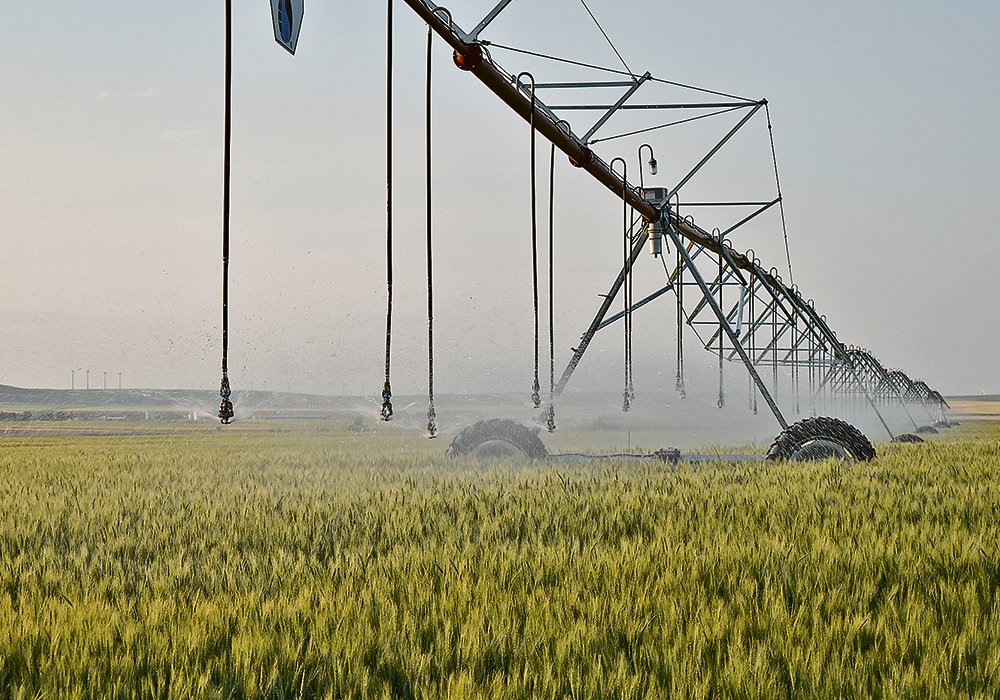Alta. irrigation districts say system passed drought test

Increased efficiencies meant districts didn’t draw their full licensed allocation despite the need for extra water due to heat and dry weather
It’s been a tough year for farmers but leaders in two of Alberta’s largest irrigation districts say they were able to meet demand and continue to do more with less water.
“I think the kind of heat we had for the last two weeks of June is something that — speaking with a lot of irrigators and other people — was pretty unprecedented,” said David Westwood, general manager of the St. Mary River Irrigation District. “But I think it was a very good testament for the design and execution of our St. Mary project to deliver water to our irrigators.”
Alberta has increased its irrigation acres during the past four decades from less than a million in 1981 to more than 1.4 million in 2019.
Jason Hale, chair of the Eastern Irrigation District in Brooks, Alta., said that increase across 13 irrigation districts is due to efficiencies being built into the system.
“We’re continuously putting in new pipelines — that really reduces evaporation,” said Hale of the conversion of open canals to underground pipes.
Those efficiencies allowed EID to not draw its full licensed allocation despite the need for water because of the prolonged stretch of extreme heat and dry weather.
“We never take our maximum amount because we’re concerned with the health of the river,” said Hale. “This is a very good example as to why water storage is important.”
Both Westwood and Hale said Alberta’s irrigation systems, which convey water from the rivers that form the South Saskatchewan Basin — the Bow, Oldman, St. Mary’s and South Saskatchewan — did well this year to keep up with demand.
One of the reasons that spurred the need for increased efficiencies was the moratorium placed on new water licences on the watershed when Alberta introduced its Water for Life Strategy in the early 2000s.
“Our goal is because we are restricted on the volume we can take, to start, is to maximize the efficiency of being able to utilize that licence,” said Westwood. “The ability for us to become more efficient as a district, and for farmers to become more efficient with their on-farm operations, that is what is being able to allow us to drive to do some expansion in southern Alberta.”
In Alberta’s system of water allocation that sees the province’s oldest licence holders get priority, management of the resource also requires co-ordination from stakeholders along the basin in years like this one, said Hale.
“We work with the other irrigation districts on the Bow River. We co-ordinate with them so if they might need more water, we take less. It’s a really good working relationship with the other districts,” he said.
Westwood stressed the need for continued improvements and maintenance to Alberta’s irrigation systems to get the most bang out of a drop of water and to grow the provincial gross domestic product from agriculture.
“We’ve always been happy that we have the Irrigation Rehabilitation Program funding from the government of Alberta. And each district utilizes that funding to go towards improvement, maintenance on infrastructure so they don’t fall into disrepair,” said Westwood.
The result of lack of proper upkeep of decades-old systems can be devastating.
A failure of a nearly century-old piece of irrigation infrastructure in Montana was felt recently north of the border when water flows were restricted to the Milk River, which crosses back and forth along Alberta’s southern border.
For more content related to drought management visit The Dry Times, where you can find a collection of stories from our family of publications as well as links to external resources to support your decisions through these difficult times.
Source: www.producer.com


